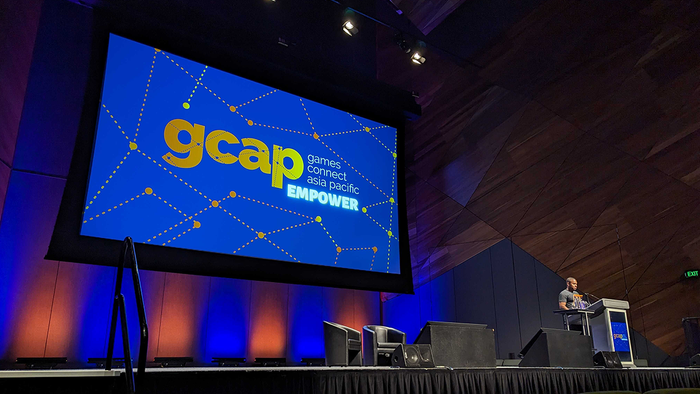Interactivity in "walking sims"; too little, too much or just right?
These are the expanded notes that was quickly jotted down into my virtual notebook after playing Gone Home & The Stanley Parable. I think I might have learned something... at least I jotted down things to consider when designing these kinds of games.

*Warning: Minor spoilers for Gone Home & The Stanley Parable, which should be okay in 2016...
To warm up to playing Firewatch I felt like I had to at least scratch Gone Home off my list, it had been sitting on my virtual shelf for some time gathering virtual dust, but this weekend it got installed and ‘completed’... too late for for me to also complete Firewatch in the same setting, but maybe next week.
The following is not an in depth analysis of the games, I will leave that to the scholars. What I have posted here is my quick notes, questions and considerations when it comes to the design.
What I found in Gone Home was a truly nice experience, not sure whether it was a game, but it was at least an interactive experience, maybe a puzzle... doesn’t matter. What struck me was that it was a very different game from another of the recognized interactive story games - The Stanley Parable. Both great stories, both same 'genre of game', but executed in so very different styles, so I decided to do a short and sweet break down of those two games to see if it would lead to something interesting.
Dear Esther
As a side note I also considered doing a break down of 'Dear Esther' - and might do so later - but for now I will leave it out as I can’t for the love of God remember what happened and what the story was about…. I remember a cave and the beautiful night sky by the end, but not much more.
I remember no interaction in the game, I just remember exploring the terrain. At the end I recall it being a nice experience, I am not sure if I got out of it what I was supposed to, but I also don’t feel the urge to go back, re-install and play it again.
Steam playtime: 117 minutes
Metacritic: 75
NOTE: I added those two numbers as I thought that they may be interesting or show something peculiar when comparing the games.
Quick notes on 'Gone Home'
Linear storytelling, told to the player (Katie) by her little sister through snippets of audio dialogs. There is a main story with a couple of smaller side-stories, but the story seems like it will always be the same (I have only played it through once).
Good / bad:
+ Pacing of the “final” part of the story worked incredibly well for me, great job!
+ Playing with genres, resulting in an uncertainty of what kind of story I was playing to begin with - a mystery or ghost story? In the end it turned out to be a drama, that was a cool turn of events.
- Lack of interactivity (how I would have liked to light those candles in the pentagram room).
- Searching for hidden panels I didn't know I had to search for... In the end I turned to google to progress, otherwise I would have just quit the thing right then and there.
Steam playtime: 2 hours
Metacritic 86

Quick notes on 'The Stanley Parable'
The story is being told by a narrator - narrating Stanley’s life - but the player has heavy influence on the story, as the player can choose to take different actions than what the narrator is telling. The player is encouraged to go explore the story space and the “story” being told will change accordingly.
Good / bad:
+ The ability to experiment with the story. The first I did was do the opposite of what the narrator told I would be doing, I was hooked immediately.
+ The clear depth and thought that has gone into creating a space and narrator that reacts and tells the story based on the players actions.
- No feeling of closure, after a while it all just feels like a playground with no particular story to tell. From an academic standpoint this might be interesting, but it made me lose interest at some point - the lack of point might even be a point, this is just so meta...
Steam playtime: 75 minutes
Metacritic 88

Right place at the right time
Both of the above are examples of how the exposition, the setting and the aesthetic works well together to create a greater experience.
Gone Home
The exposition through the audio logs works really well in this game, as there is nothing else going on in the game that can interrupt the listening experience. This meant I got to hear every word of the audio logs, without feeling like I had to stop and wait to for them finish before I could move on. In an intense game like Bioshock I would often miss parts of audio logs as I was focused on upgrades, my health or I was involved in a firefight with the sound of gunfire drowning out the story being told, that is a shame and a lot of wasted production. Most of the audio logs in a game like Bioshock you can stand still and listen to, but that just kills the pacing for me.
Consideration: Audiologs are great as players don’t have to read (and we all know they hate that), but if you want to use audio logs to handle your story exposition, make sure the player is in the right environment and that the game is paced in a way that allows the player to focus on the story being told without feeling the experience comes to a grinding halt (Looking at you Bioshock).
The new empty house, the cliché thunder, the dad who is seemingly a failed author and a mother that might be having an affair - everything screams cliché horror. Gone Home flirts with the horror elements, making you a bit weary to go through the dark passages - the house legitimately felt scary to me as I sat alone in our dark living room - but you learn that nothing supernatural is really going on. But when you start out the setting and flirting with other game genres kept me on my toes. Had this story not played out in this setting I would probably not have been so intrigued to see it to the end. The empty house and horror clichés also helps set your expectations for the ending so that you are happily surprised to see the story take one final twist right at the end.
Question: Will your game story benefit from a setting that to some extent misleads and set expectations differently than what your plot would otherwise normally dictate? Twin Peaks to some extent did this with great success as well, what looked liked a small town crime drama turned out to be a surrealistic supernatural story.
The Stanley Parable
The Stanley Parable is narrated by an invisible voice over - trying to tell a story. The great part is that you as the player can choose to go your own ways and the storyteller has to scramble in order to keep up with you literally “going off script”. This is such a unique feature as it requires a lot of pre-scripted scenarios for it to work, basically the player has to feel like the game has accounted for everything. The delightful thing is that the game changes in a way that players are not used to, usually the VO or the story can’t change… The same trick was to a lesser extent used in Bastion, where the voice foretold what was happening (or rather narrated it as it happened in a likewise heavily scripted way).
Consideration: Can you somehow surprise the player through the VO by adapting it to player choice - letting the player change the course of the story like in Stanley or can you do live commentary like in Bastion, so it at least feels like the VO reacts to your actions. In a game with a lot of story I think this is a worthwhile trick to consider adding - maybe just in one or two places.
The look and feel of The Stanley Parable really fits the story and the theme. This is something all games should do. Maybe most importantly the length of the level in this instance is really crucial, since it has to be long enough to provide enough options to encourage replayability, but not so long that it takes too much time to go through it, which would discourage replayability. I think The Stanley Parable got it just right.
Consideration: Do you create a story that can be played more than once, do you hope players play through the story more than once, then maybe make a shorter game. I, for example, liked the story in Heavy Rain and wanted to play it again, but stopped at some point, it simply took too long for me to get to the parts I wanted to relive and maybe try to handle differently, on the other hand I played through Stanley 5+ times in 75 minutes and loved every minute.
Do you want more to do?
Both games are excellent interactive stories, but - budgets aside - would the addition of more interactive elements / gameplay add or detract from the overall experience?
What would happen if every binder in Gone Home could be opened, or if all doors and hallways in the building could be explored in The Stanley Parable?
Stanley Parable has next to no interaction, no myriad of objects to inspect or notes to read. This is good, because that allows for rapid repeats, which allows you to challenge and play it differently, to explore the story space that the game provides - in short it keeps focus on the core experience.
More actions or interaction would increase the time to run through the game and decrease the likelihood you’d want to go back and explore another angle. Also the more actions you have in a tree structure like Stanley’s, the further the tree branches out. As such the importance of the individual action you take is diminished; if you have one choice that is all that matters if you have 100 that are equally important then none of them are really important anymore - does that make sense?. In The Stanley Parable there are a few key choices that hint at the greater meaning of the game diluting those would be a shame I feel.
I played for roughly over an hour of Stanley and felt I had explored a healthy amount of the story space, I know there is more, but if the space had been bigger I would feel like I had to come back and play more to get my money's worth, right now I’m very satisfied - looking at it in hindsight Stanley Parable didn’t need more actions or things to interact with. It was just right, for what I thnk it tried to do.
Gone Home allows you to pick up a lot of stuff but not really do anything with it. There is an inventory as well, but it is hardly used for anything. I’d almost say that there is too much stuff to interact with in Gone Home, but on the other hand part of the pacing and story is to have the player spend time rummaging through everything as you are trying to find clues about what happened to your family.
From my perspective I would have loved to see less meaningless 3-ring binders or faucets and toilets and instead get the option to light the candles in the Pentagram room or have to find a hook to pull down the attic stairs. The two latter actions would feel meaningful and help build suspense. In my opinion Gone Home would have benefitted from adding meaningful interactions instead of some of the meaningless ones.

I would much rather be able to light the candles and see some fire and maybe hope for Oscars voice from beyond the grave, instead I am able to flush the toilets...
Consideration: Maybe less is more when it comes to interacting in a heavily story driven game like a walking sim...ess filler and just give the player actions that seem meaningful. The anticipation of change may be enough to create excitement in a situation like the one above with the candles. If I could light the candles I would be excited to hear if Oscar would reply to me... or a ghost appear etc.
Anyway now I’m ready to play Firewatch… or rather next weekend I will be ready to play if nothing else will derail my plans - knock on wood (firewood!)
Read more about:
BlogsAbout the Author(s)
You May Also Like








